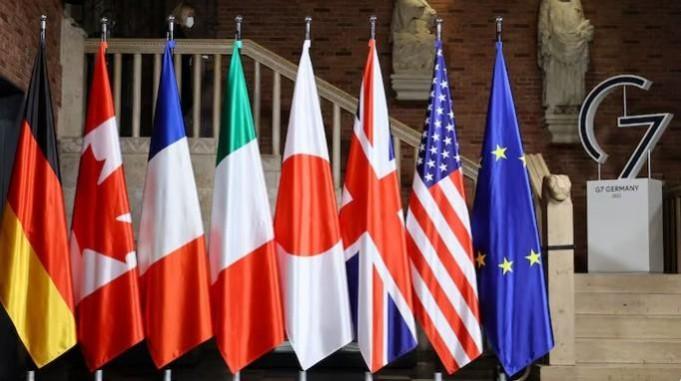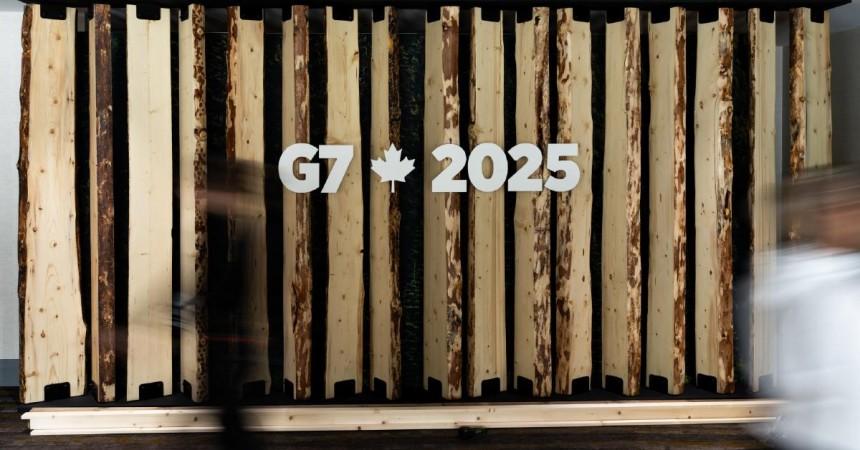
As the G7 leaders gather in Kananaskis, Alberta, the world's most advanced democracies find themselves not at a crossroads but at the epicenter of a polycrisis—a convergence of wars, economic fragmentation, technological upheaval, and societal strain. This is not the G7 of old, presiding serenely over a stable order. This is a summit in the crucible, where the very notion of global leadership is on trial.
"We cannot afford to let economic fragmentation become the new normal. Our prosperity and security depend on restoring trust and resilience in the global system." — Mark Carney, Prime Minister of Canada
The Polycrisis Unfolds
The world the G7 faces in 2025 is not defined by a single emergency but by a relentless cascade of interlocking crises. The war in Ukraine, now in its fourth year, continues to drain Western unity and resources, even as President Zelenskyy arrives pleading for renewed resolve. "When Europe thinks for a long time, they talk a lot between themselves, and doubts appear," he warns, his words echoing in the summit's corridors.
Meanwhile, the Israel-Iran conflict has exploded into open warfare, with Israeli strikes on Iranian military and nuclear-linked sites and Iran's retaliatory barrages destabilizing energy markets and global security. Oil prices have soared, and the risk of regional escalation looms over every G7 discussion.
The economic landscape is equally fraught. President Trump's new tariffs on Canadian metals and autos have soured North American relations, forcing Canadian Prime Minister Mark Carney into the unenviable position of defending national interests while advocating for de-escalation. Across the Pacific, a fragile US-China tariff détente offers a rare moment of stability, but both sides remain wary, knowing the truce could unravel at any moment.
"America will always put its interests first, but we are ready to make deals that work for everyone—if everyone plays fair." — President Donald Trump
The Age of Self-Reliance and Minilateralism
In this environment, self-reliance is no longer a slogan but a necessity. The weaponization of interdependence whether in energy, technology, or food has forced every G7 member to rethink its vulnerabilities and build new forms of economic and strategic resilience. As Prime Minister Narendra Modi asserts, "A new world order must reflect the aspirations of all, not just the privileged few. Self-reliance is the foundation of true sovereignty."
Yet, the G7's capacity for unified action is increasingly challenged by the rise of minilateral, interest-driven alliances. The Quad, trilateral tech coalitions, and ad hoc energy partnerships have become the new laboratories of adaptation, allowing rapid response to emergent threats but also raising questions about reliability and legitimacy. Chancellor Friedrich Merz captures the moment: "In an age of polycrisis, agility and creative coalition-building are as vital as resolve."
Competing Interests, Compulsions, and Strategies
Every leader arrives in Kananaskis with a unique set of pressures and ambitions:
President Trump seeks transactional "wins" on trade and security, using tariffs as leverage and demanding allied burden-sharing on Ukraine and the Middle East. His approach is shaped by domestic skepticism of "forever wars" and a conviction that "America will always put its interests first."
Prime Minister Carney positions Canada as a pragmatic bridge-builder, mediating US-Canada tensions and championing climate-tech alliances, even as he faces the vulnerability of Canadian industries to US tariffs.
Prime Minister Keir Starmer of the UK aims to restore Britain's post-Brexit credibility, balancing US ties with European consensus and emphasizing that "Britain's future lies in responsible partnership, not splendid isolation."
Chancellor Merz and President Macron push for European strategic autonomy and economic competitiveness, advocating for diplomacy on Iran and Ukraine while managing political fragmentation at home.
Prime Minister Giorgia Meloni leverages migration and energy issues for concessions, reflecting domestic populism and a focus on self-reliance in food and energy security.
Prime Minister Shigeru Ishiba of Japan, a security hawk, seeks G7 backing for Indo-Pacific deterrence and technological self-sufficiency, stating, "Japan cannot afford to be dependent on any single source for its security or prosperity."
EU leaders Costa and von der Leyen strive for regulatory leadership on digital and green transitions, with von der Leyen emphasizing, "Strategic autonomy begins with strategic self-reliance."
Prime Minister Modi asserts India's role as a champion of the Global South, advocating for technological and energy self-reliance and a multipolar order.
"Strategic autonomy is not a slogan it is a necessity." — President Emmanuel Macron
Fault Lines and Fragile Consensus
Beneath the summit's formal agenda, deep bilateral and multilateral rifts persist. The US-Canada tariff conflict and resource disputes dominate North American discussions. The US-China tariff truce is fragile, with both sides testing the limits of strategic patience. Within the G7, divisions on Ukraine sanctions and Middle East strategy are sharp, with the EU pushing for tougher measures and the US signaling caution.

Minilateral coalitions proliferate, reflecting both the limits of G7-wide consensus and the necessity for rapid, flexible action. Yet, as the polycrisis deepens, there is a growing recognition that self-reliance must be balanced with the creative orchestration of alliances old and new.
Vision, Outcomes, and the Search for Relevance
Is a grand bargain possible? The summit's likely outcome is a pragmatic, incremental consensus:
On Ukraine: Reaffirmed support, but no new US sanctions on Russia unless peace talks fail; EU and UK push for more, but unity is fragile. Zelenskyy presses for a foreign security contingent post-ceasefire, warning, "Without foreign security in Ukraine, Putin will continue with maximalist demands."
On Israel-Iran: Joint calls for de-escalation and humanitarian corridors, but no appetite for direct intervention; the US signals non-involvement.
On Trade: Temporary truce on US-Canada tariffs, guarded optimism on US-China trade, and new initiatives on resilient supply chains.
On Technology and Climate: Shared frameworks for AI safety and green finance, but regulatory divergence persists.
On Minilaterals: Recognition that flexible, interest-based alliances are now essential complements to G7 action.
Navigating the Age of Polycrisis
The G7's greatest challenge and opportunity is to move beyond crisis management and embrace a new geostrategic creativity. This means not only defending the old order, but designing adaptive architectures for collective action in a world of polycrisis. It means embedding self-reliance within networks of trust, and using minilaterals not as substitutes for global leadership, but as laboratories for innovation and resilience.
"A new world order must reflect the aspirations of all, not just the privileged few. Self-reliance is the foundation of true sovereignty." — Prime Minister Narendra Modi
The G7's Polycrisis Reckoning
The G7 in Kananaskis is not just a diplomatic ritual it is a test of whether the world's advanced democracies can adapt to a reality they no longer control. Their legacy will not be measured by eloquent communiqués, but by their willingness to embrace minilateral agility, engage the Global South, and forge a vision that is both realistic and ambitious.
In an age of cascading crises, the G7's relevance will depend on its capacity to convene, to listen, and when history demands it to lead with clarity, creativity, and courage.
[Major General Dr Dilawar Singh is an Indian Army veteran who has led the Indian Army's Financial Management, training and research divisions introducing numerous initiatives therein. He is the Senior Vice President of the Global Economist Forum AO ECOSOC, United Nations and The Co President of the Global Development Bank.]

















